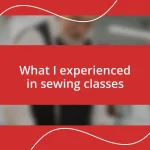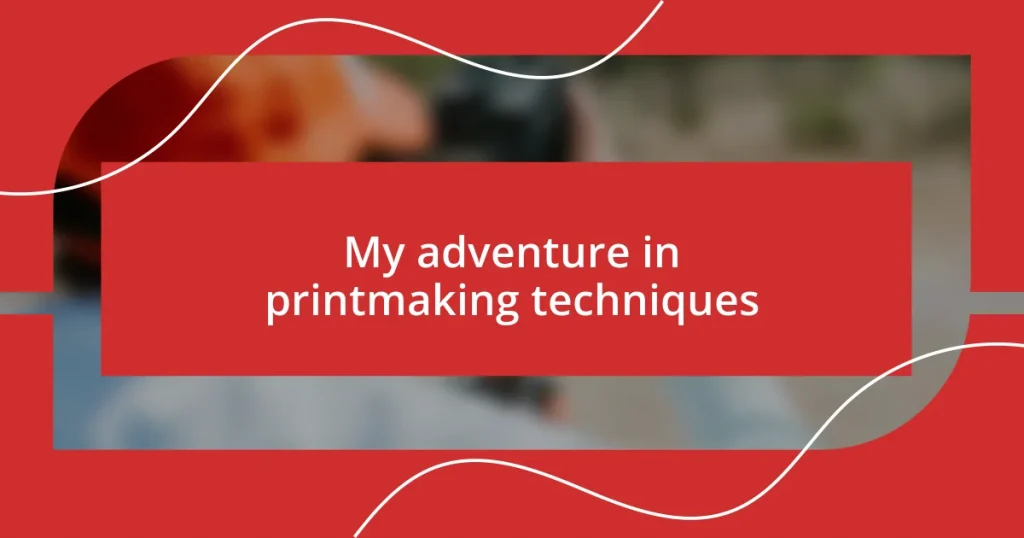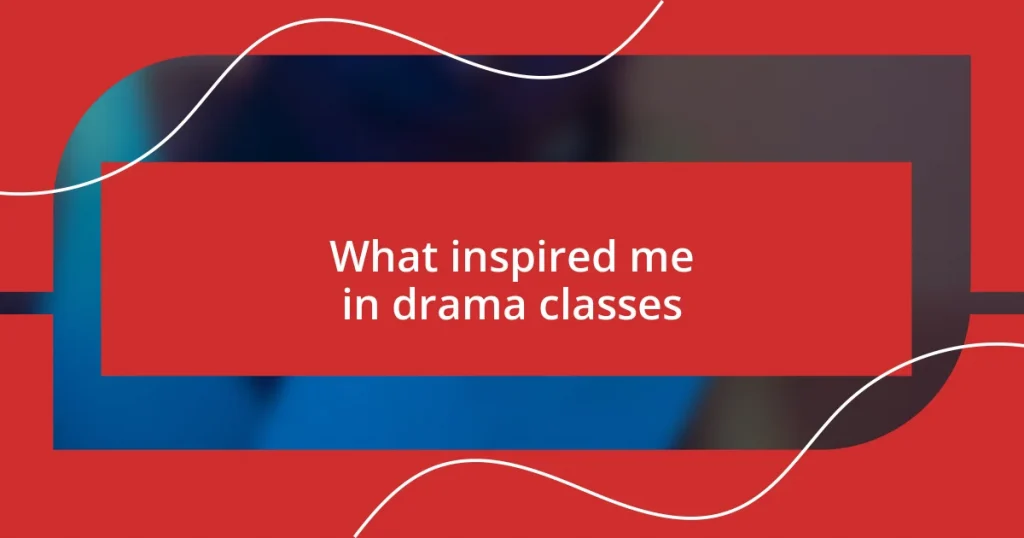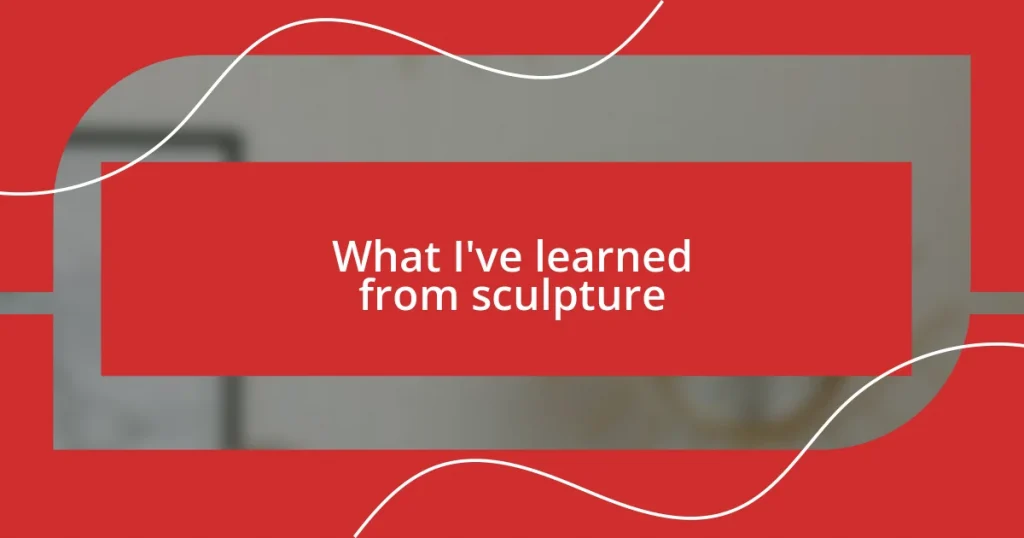Key takeaways:
- Printmaking offers a diverse range of techniques that encourage creativity and experimentation, emphasizing the journey and unexpected outcomes in the artistic process.
- Essential tools like brayers, printing plates, and specialized inks are crucial for achieving vibrant prints and enhancing artistic expression in printmaking.
- Techniques such as monotype printing and embracing imperfections can lead to unique and personal artworks, fostering emotional connections and serendipitous creativity.
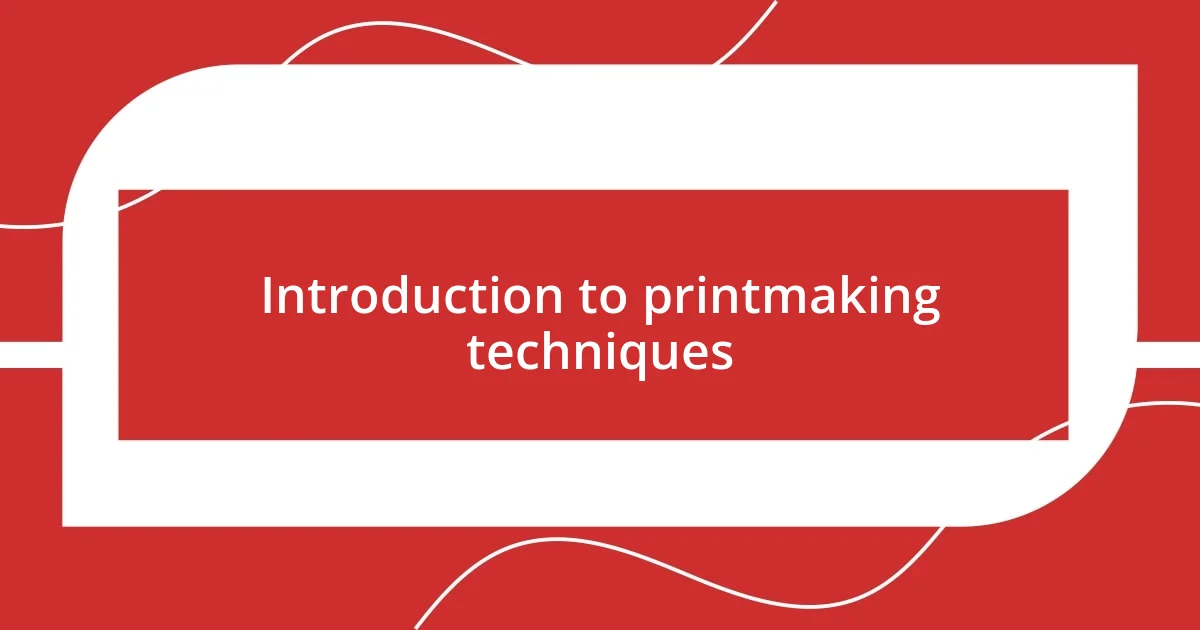
Introduction to printmaking techniques
Printmaking is a fascinating art form that spans centuries and cultures, each technique offering unique ways to express creativity. I still remember the thrill I felt the first time I pulled a print from a linocut; the anticipation of revealing the design seemed almost magical. Isn’t it incredible how, with just a few simple tools, we can create beautiful works of art that have a tactile quality unlike any other medium?
As I delved deeper into printmaking, I discovered a variety of techniques, like etching, screen printing, and woodblock printing, each with its own character and charm. Every method invites experimentation and lends itself to different artistic expressions. Have you ever wondered how a simple image can transform so dramatically based on the printmaking technique used? It’s a question I’ve wrestled with as I explored each method, and the answers have expanded my appreciation for this timeless craft.
The process of printmaking is not just about the final piece; it’s about the journey, the mistakes, and the happy accidents along the way. For instance, during a recent printmaking workshop, I accidentally over-inked my plate, resulting in a wonderfully abstract piece I never could have planned. It’s a reminder that within the world of printmaking, every experience can lead to unexpected beauty—this unpredictability keeps me coming back for more!
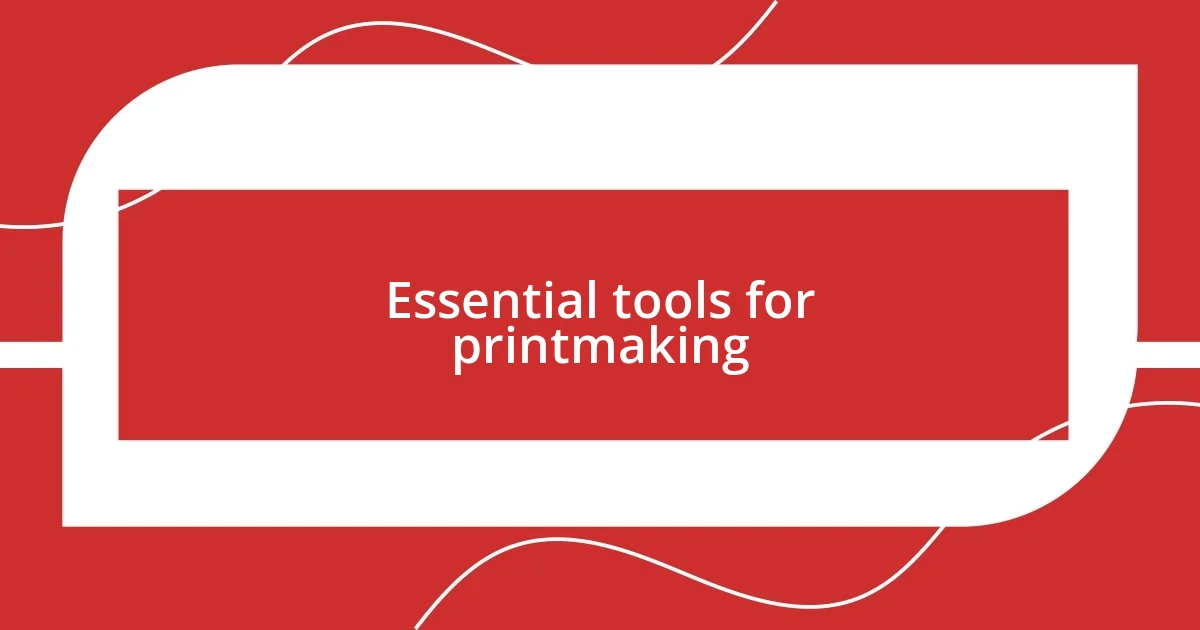
Essential tools for printmaking
When I first started printmaking, the array of tools felt overwhelming. Each one serves a unique purpose, but the beauty of it lies in how these tools mesh together to create art. For instance, my initial investments were simple yet essential, allowing me to explore various techniques without breaking the bank. I remember the first time I used a brayer to roll ink; it was surprisingly satisfying to see the smooth surface coated just right.
Here’s a short list of essential tools that every printmaker should consider having:
- Brayer (roller): Perfect for applying an even layer of ink on your plate.
- Printing plate: Whether it’s linoleum, wood, or metal, this is where your design comes to life.
- Baren: A handheld tool used for applying pressure; I find this method quite physically engaging.
- Inks: Special printmaking inks are crucial for vibrant colors and lasting impressions.
- Paper: Choosing the right paper can significantly affect the final print; it’s worth experimenting with textures and weights.
As I’ve experimented with these tools, I can attest to the transformative power of a good set of carving tools. A finely crafted V-tool changed my game, allowing me to achieve intricate details I once deemed impossible. It’s incredible how each tool not only contributes to the process but also influences my creative spirit. The right tools can feel like an extension of your arm, providing both precision and freedom as you carve and print your vision.
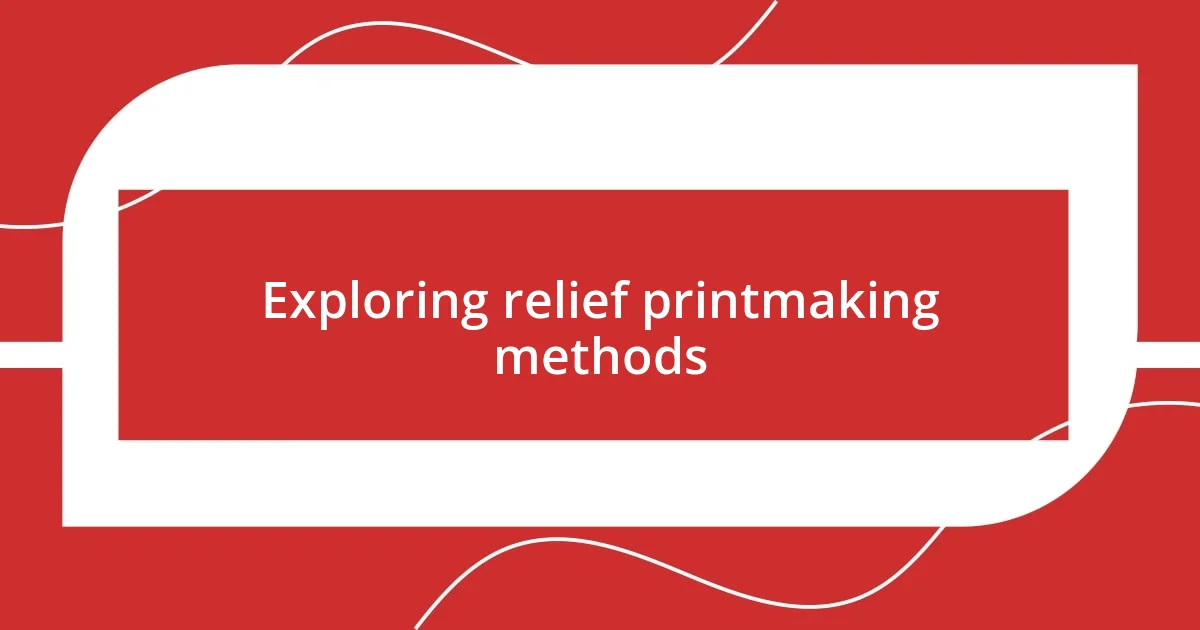
Exploring relief printmaking methods
When exploring relief printmaking methods, I find that the thrill lies in the diversity of techniques available. One of my favorites, linocut, allows for bold and graphic designs that can really stand out. I still remember the rush I felt the first time I carved into linoleum; the resistance of the material was both daunting and exhilarating. Each cut I made felt like a step into the unknown, and the anticipation of unveiling the final print is something I live for.
Woodblock printing, on the other hand, introduces a different character to my work. The rich textures and variations in ink application add depth that I truly appreciate. I used to think that woodblock printing was merely about creating an image; however, it’s truly about embracing the imperfections. One time, a splatter of ink made my print unexpectedly vibrant and chaotic, adding a lively energy I didn’t foresee. It taught me that in printmaking, sometimes the ‘mistakes’ speak louder than the carefully planned designs.
Block printing is another method worth mentioning. It’s fascinating how it merges craftsmanship with artistry. I remember my first attempt at reduction printing, where I meticulously carved away layers to create a multi-colored effect. The process felt like a delightful puzzle; each layer revealed a new dimension of the artwork. The challenge of timing and precision is thrilling, yet rewarding when you see the final product. Each approach adds its own flavor to my practice, and I continue to be amazed by how every method captivates my creativity in unique ways.
| Technique | Description |
|---|---|
| Linocut | Bold designs carved on linoleum, offering graphic quality. |
| Woodblock | Textured prints created from carved wood; embraces natural imperfections. |
| Block Printing | Layered printing that reveals depth and color through careful carving. |
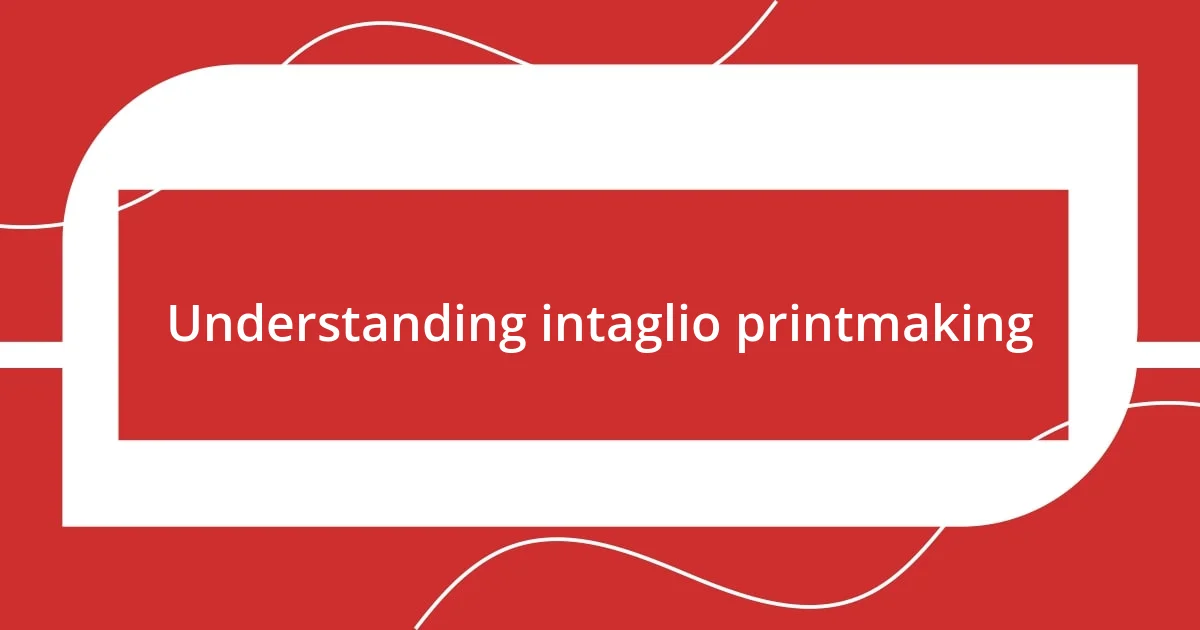
Understanding intaglio printmaking
Intaglio printmaking has always captivated my imagination. The process involves incising a design onto a metal plate, which can be either copper, zinc, or steel. Each time I immerse myself in this technique, I feel a sense of anticipation, knowing that the line quality and texture will bring depth to my prints in ways other methods can’t.
I remember my first experience with etching; the sound of the needle scraping against the plate was both nerve-wracking and thrilling. As I dipped the plate into the acid bath, I held my breath, hoping the design would translate beautifully. That moment of unveiling the print felt like revealing a hidden treasure, each line telling a story I had etched into the metal.
What’s truly remarkable about intaglio is its versatility. From drypoint, where I used a simple needle, to more intricate aquatint, I’ve learned how each technique impacts the final outcome. The emotional connection I feel to the artwork is profound. I often wonder: how can something that begins as a simple line evolve into such a complex narrative? Each print I create is a reminder that art is both a journey of exploration and a profound expression of my inner world.
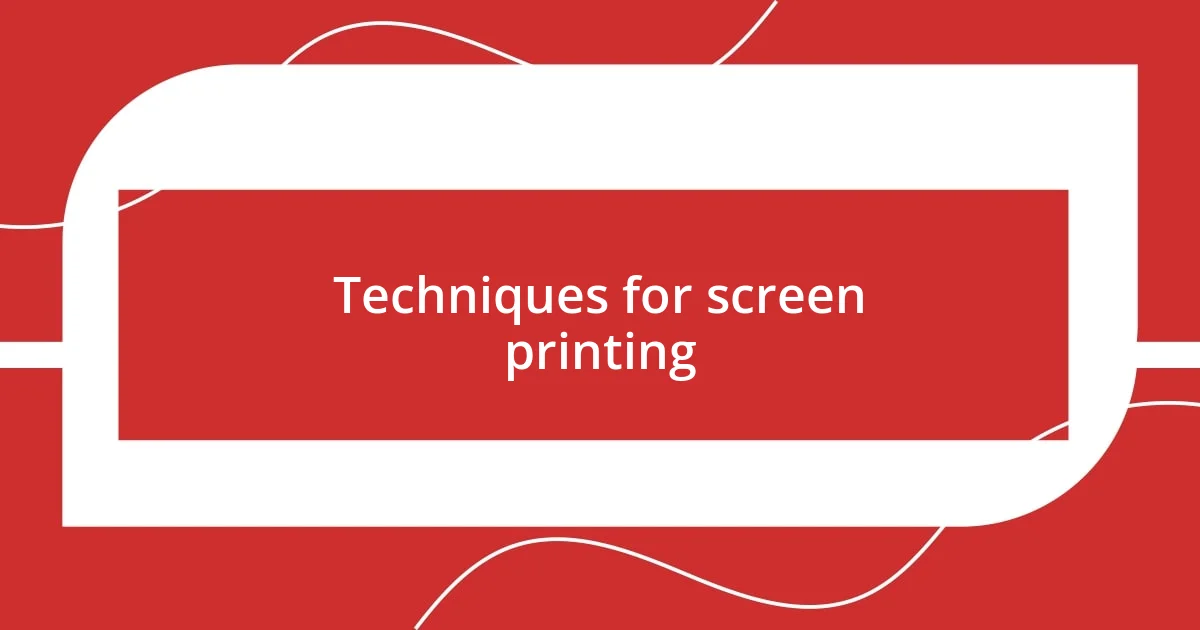
Techniques for screen printing
Screen printing is a fascinating technique that never fails to spark my excitement. The process involves pushing ink through a mesh screen to create bold, vibrant designs. I still remember the first time I used photo emulsion to create a stencil; the magic of transforming a digital image into a tangible print felt like wizardry in my hands.
One of the things I cherish about screen printing is the ability to layer colors. I learned this while working on a collaborative project, and the conversations with fellow artists about achieving the right blend were incredibly enriching. It’s a bit like cooking—each layer of ink adds a new flavor, and sometimes the unexpected combinations yield the most delightful results. Have you ever experienced that surprise twist in your creative process? It’s these moments of serendipity that remind me why I love printmaking.
Another key aspect is the flexibility in substrate choices. Whether it’s fabric, paper, or even wood, I often experiment with different materials to see how they react with the ink. I’ll never forget the time I printed on a canvas bag; the texture added an unexpected dimension to the design and gave the piece a unique character. Isn’t it fascinating how the medium can change the entire narrative of the artwork? Exploring these variables makes every new screen-printing project an adventure, keeping my passion for this technique alive and thriving.
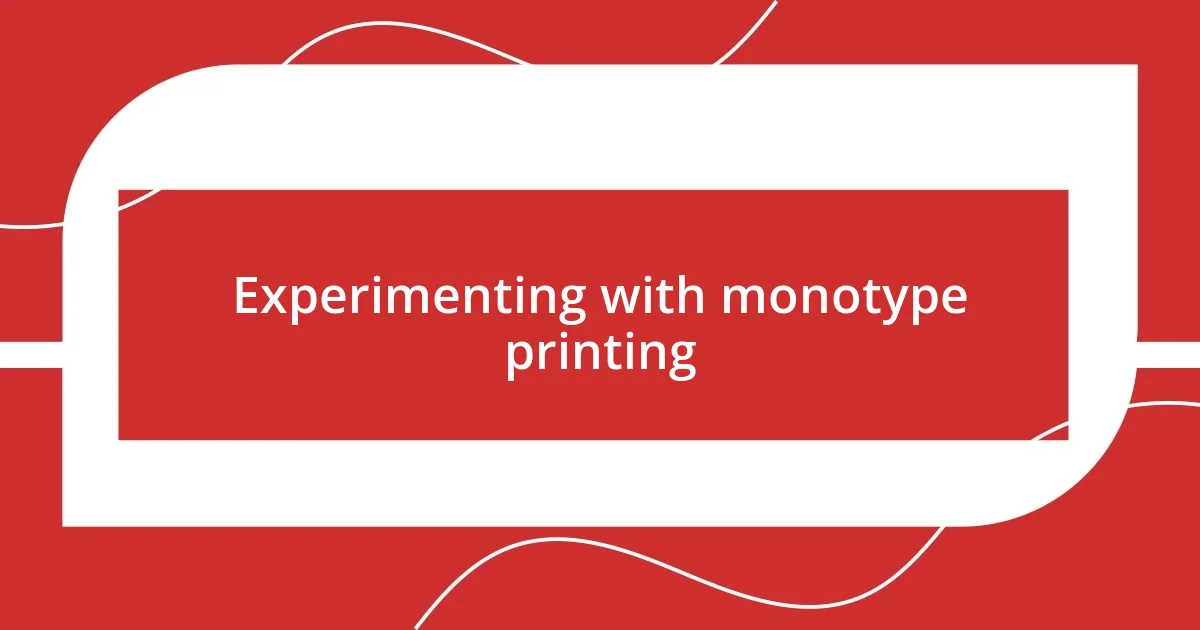
Experimenting with monotype printing
Monotype printing has become one of my favorite techniques because of its spontaneous nature. The thrill of applying paint directly to a plate and then transferring it onto paper feels like capturing a moment in time. I still remember one afternoon when I smudged vibrant colors together on the plate, letting my intuition guide me. The resulting print was a beautiful accident that sparked a new direction in my artistic journey. Have you ever tried creating something on a whim, only to be pleasantly surprised by the outcome?
What’s particularly striking about monotype printing is its unique ability to produce one-of-a-kind pieces. Unlike other printmaking styles that yield multiple prints from the same matrix, each monotype is distinct. I remember my first time experimenting with textures; I used various materials like foliage and fabric to create impressions that added an unexpected twist to each print. It was like unlocking a treasure chest of artistic possibilities right before my eyes. Isn’t it thrilling to think that no two prints will ever be alike?
I also find that the immediacy of monotype printing allows for an emotional release during the creative process. When I pour paint onto the plate and manipulate the colors with my hands, it feels liberating—as if I’m literally transferring my feelings onto the paper. One day, I was feeling particularly reflective, and I created a print that captured my mood perfectly; the swirling colors mirrored my thoughts. Can art be a form of therapy? For me, it certainly is, and this connection makes monotype printing a deeply personal experience every time.
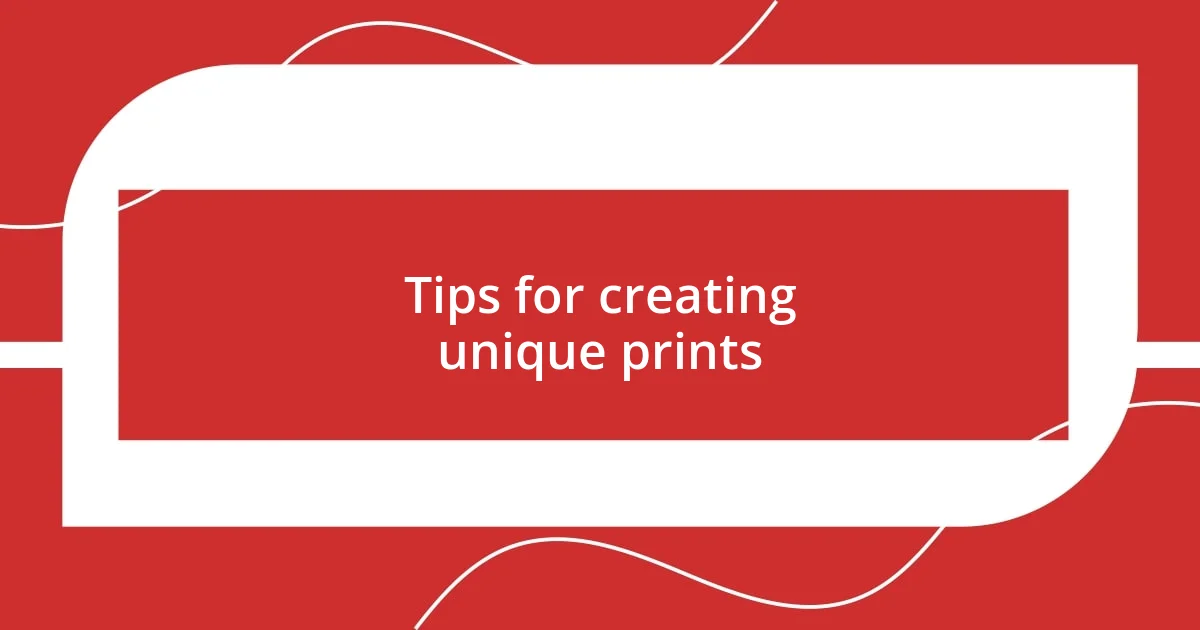
Tips for creating unique prints
When I dive into creating unique prints, I often lean into unconventional methods for inspiration. One memorable experience involved using household items—like sponges and kitchen utensils—as my tools. By rolling ink with a textured sponge, I discovered how those everyday materials could create intricate patterns. Have you ever thought about what items around your home could double as art supplies? It’s amazing how this mindset opens up a treasure trove of creativity and leads to unexpected prints that tell their own stories.
Another tip I cherish is to embrace imperfections. Sometimes I deliberately allow ink to smudge or blend in unexpected ways. I vividly recall a moment when I misaligned a screen while printing, only to realize that the misprint added a charming, ghost-like quality to the final piece. Isn’t it incredible how a “mistake” can lead to an entirely new artistic path? Those happy accidents often become my favorite pieces, reminding me to be open to where the process takes me.
Lastly, don’t shy away from incorporating mixed media into your prints. I once added watercolor washes to my printed images, and the combination transformed them into vibrant compositions bursting with life. Experimenting with different media taught me that the boundaries between printmaking and other artistic practices are fluid. Have you ever mixed styles and found something entirely unique? This blending of techniques makes every project feel fresh and exciting, pushing the limits of my imagination.





